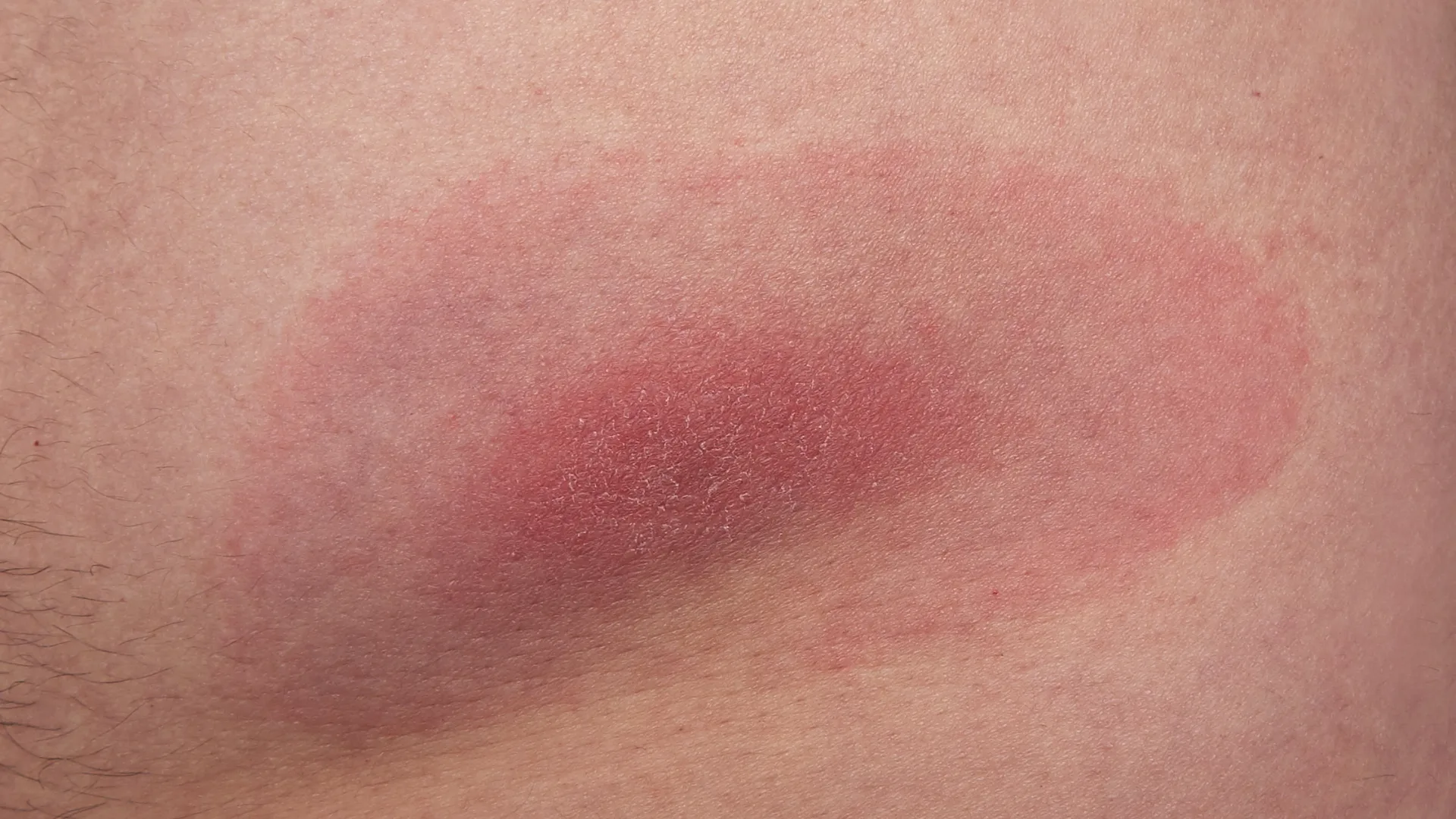Ticks are generally thought of as a bit of a nuisance – an itchy reminder of a weekend bushwalk or something you need to check behind your dog’s ears for.
But for some, a tick bite can lead to Lyme disease, an infectious illness that can leave you seriously unwell.
What causes Lyme disease?
Lyme disease is caused by certain strains of the Borrelia bacteria, which are transmitted to humans through the bite of an infected tick.
While it’s well-established in the United Kingdom, the United States and parts of Asia, Australian experts haven’t yet found these specific bacteria in local ticks, which means the government doesn’t officially recognise Lyme disease as something you can catch here.
Instead, it acknowledges a group of patients dealing with ongoing, often debilitating symptoms following suspected tick bites, referred to as debilitating symptom complexes attributed to ticks (DSCATT).
Despite the uncertainty, many Australians report falling ill after being bitten by ticks, particularly in bushland areas along the east coast.
What are the symptoms of Lyme disease?
Symptoms can vary widely and can change depending on how far the disease has progressed. Early symptoms typically appear three to 30 days after a tick bite, after which many people have forgotten they’ve even been bitten.
Early symptoms to look out for include:
- A red, expanding rash, often shaped like a bullseye
- Fever and chills
- Fatigue
- Headaches
- Muscle and joint aches
- Swollen lymph nodes
It’s worth noting that not everyone gets a rash, and in some cases, early symptoms can be mild or mistaken for the flu.

If left untreated, Lyme disease can progress to more serious symptoms, including:
- Severe joint pain and swelling
- Neurological problems such as facial palsy, numbness or tingling
- Brain fog and memory issues
- Heart rhythm irregularities
- Mood changes or anxiety
Some people develop chronic symptoms that persist long after antibiotic treatment. This is sometimes referred to as ‘chronic Lyme disease’ or post-treatment Lyme disease syndrome, although it remains a subject of medical debate.
How is Lyme disease diagnosed?
Diagnosis can be difficult, especially if the infection occurred overseas or if the tick bite went unnoticed. Blood tests to detect Borrelia antibodies are available, but they’re more accurate a few weeks after infection, once the body has developed an immune response.
In Australia, testing for Lyme disease is typically carried out through specialised pathology labs and sometimes sent overseas. GPs may also rely on a combination of symptoms, exposure history (like if you’ve been bushwalking or travelling overseas), and ruling out other conditions.
Because of these complexities, some people experience long delays in diagnosis. If you suspect Lyme disease, it’s important to speak with a GP who is familiar with tick-borne illnesses or ask for a referral to an infectious disease specialist.
How is Lyme disease treated?
When diagnosed early, Lyme disease can usually be treated effectively with a course of antibiotics.
For those with more advanced or persistent symptoms, longer courses of antibiotics may be recommended, alongside physiotherapy, pain management, and mental health support.
While many people recover fully, others continue to experience fatigue, joint pain or cognitive issues for months – or even years – after treatment. This has led to calls for more research and the development of better diagnostic tools to be made available locally.

Where are ticks found, and how can you protect yourself?
Ticks are found in bushy, humid areas, particularly along the east coast of Australia – from far north Queensland down through New South Wales and into Victoria. They’re most active in warmer months and can be picked up during activities like hiking, gardening, or camping.
To reduce your risk of being bitten:
- Wear long-sleeved shirts and pants tucked into socks
- Use insect repellent that contains DEET or picaridin
- Stay on clear paths and avoid brushing against vegetation
- Check yourself for ticks after spending time outdoors
- Remove ticks promptly with fine-tipped tweezers
It’s also a good idea to shower soon after being outdoors and to carefully check pets, especially dogs, who can carry ticks home with them.
This article is for general information only and is not a substitute for medical advice. Always consult your GP or a qualified healthcare professional.

